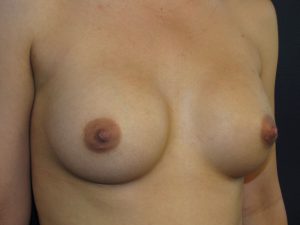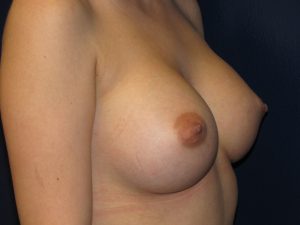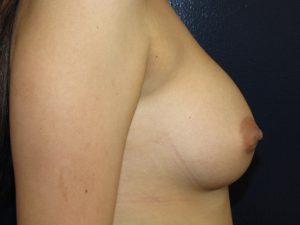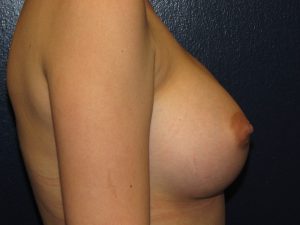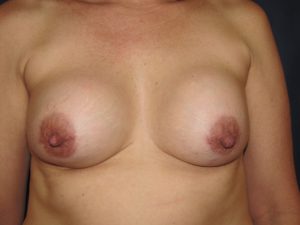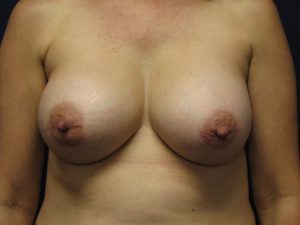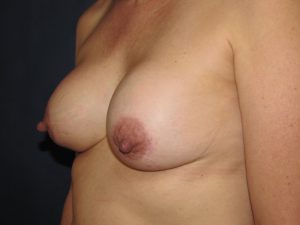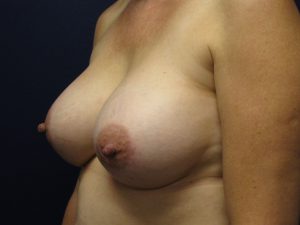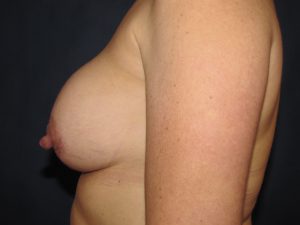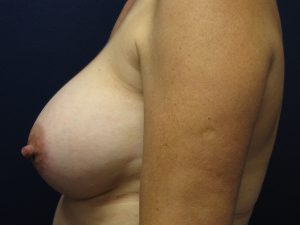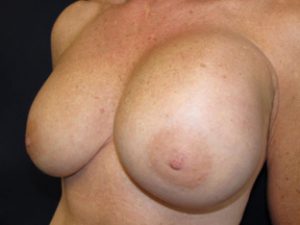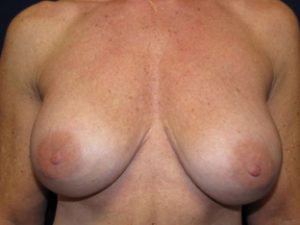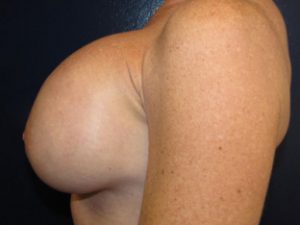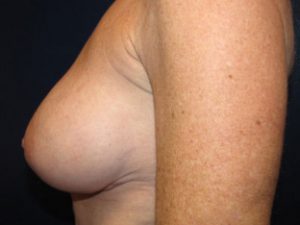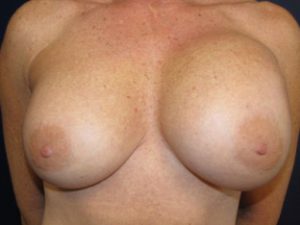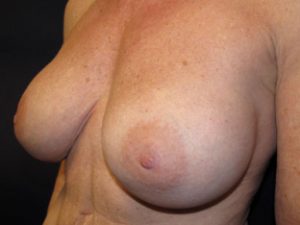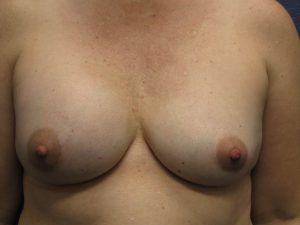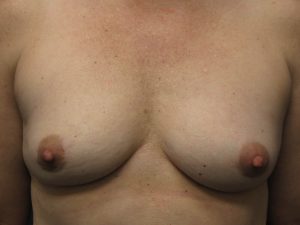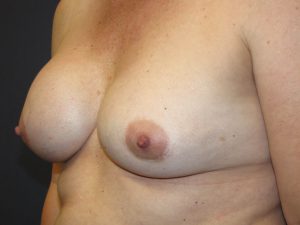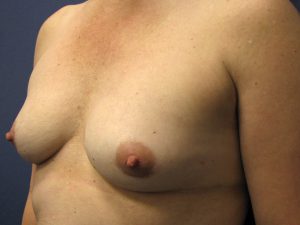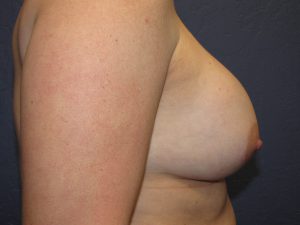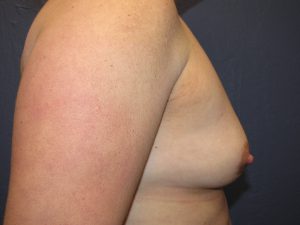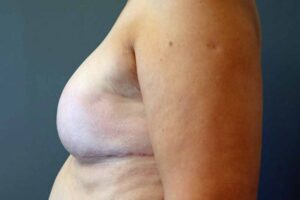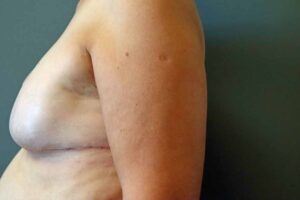Breast Revision Surgery
 An overwhelming majority of women who have had elective breast surgery including breast augmentation, breast lift or breast reduction are extremely happy with their results. The impact on their lives physically, mentally and emotionally is usually extremely positive. Among the happiest and most satisfied plastic surgery patients that Dr. Steven H. Turkeltaub has are those women who have undergone either a breast enlargement or a breast reduction. In fact, a very frequent comment that he hears from his breast reduction patients is: “Why did I wait so long to do this?”
An overwhelming majority of women who have had elective breast surgery including breast augmentation, breast lift or breast reduction are extremely happy with their results. The impact on their lives physically, mentally and emotionally is usually extremely positive. Among the happiest and most satisfied plastic surgery patients that Dr. Steven H. Turkeltaub has are those women who have undergone either a breast enlargement or a breast reduction. In fact, a very frequent comment that he hears from his breast reduction patients is: “Why did I wait so long to do this?”
Nevertheless, not all results live up to expectations for any number of reasons and they also should not be expected to last forever. Having provided breast revision surgery in the Scottsdale and Phoenix metropolitan area for well over three decades, Dr. Turkeltaub has extensive experience in successfully treating a wide array of issues related to prior breast procedures. Even though results can never be guaranteed, a patient has a much greater likelihood of obtaining a more ideal outcome by selecting a board-certified plastic surgeon who is very experienced, has a comprehensive understanding and appreciation of aesthetic ideals, can offer and lucidly explain the full spectrum of options, and is highly skilled technically.
To learn more about breast revision, the various concerns it can address and what former patients have to say about their experience and results, please explore the sections provided below. If you have any questions or if you wish to meet with Dr. Turkeltaub to discuss your specific case in person, please contact us today to schedule a consultation at the Arizona Center for Breast Surgery.
- What is Breast Revision Surgery?
- Common Reasons for Breast Revision Surgery
- What Can I Expect in the Breast Revision Procedure?
- How Long is the Recovery from Breast Revision Surgery?
- How Much Does Breast Revision Surgery Cost?
- Breast Revision Surgery Patient Testimonials
- Additional Information About Breast Revision Surgery
What is Breast Revision Surgery?
Breast revision surgery refers to a broad category of different techniques that are designed to enhance, reverse or otherwise improve upon the results of a previous breast surgery. Some suboptimal outcomes associated with the initial procedure can be due to technique or skill related issues or decisions in the performance of the surgery. Patient-based factors can include genetics, non-compliance, weight gain, weight fluctuations, misconceptions, injury, smoking, vaping and health-related issues. Breast implants do not necessarily last forever and may eventually have to be replaced or removed.
Finally, results do change with time and are not static—skin stretches, implants deflate or rupture, we get older, our weight changes or our tastes evolve. For these and many other reasons, there may be a need for a secondary procedure in order to address one or more of these issues.
Common Reasons for Breast Revision Surgery
Listed below are some of the more common or significant reasons for deciding to undergo breast revision surgery:
- Breast Size Issues
- Breast Asymmetry
- Implant Exchange or Upgrade
- Implant Pocket Relocation
- Malposition of the Implants
- Implant Pocket Configuration Issues
- Capsular Contracture
- Implant Rupture
- Implant Removal (Explantation)
- Capsulectomy
- Implant-Induced Skin Rippling
- Skin Stretching
- Saggy Breasts (Ptosis)
- Breast Contour Issues
- Flipped Implant
- Nipple-Areolar Issues
- Undesirable Scarring
- Infection
- Implant Exposure
Breast Size Issues
For breast enlargement, it seems that the most common issues are essentially size, size and size! A majority of the time, the dissatisfaction is that the breasts either were not enlarged enough initially or that they are not big enough now. Less commonly is the complaint that the breast implants that were placed were too large.
Breast reduction patients are extremely happy that they are much smaller and rarely do they voice concerns about size. Women who have had substantial weight gains or losses or continued breast growth subsequent to their initial procedures may decide later on to make adjustments to their breast size, either larger or smaller.
Breast Asymmetry
Virtually all women have some asymmetries of their breasts prior to surgery though they may have not noticed them previously. These can include differences in size, shape, location on the chest wall, chest wall irregularities as well as differences of nipple size, shape and vertical height. Although it may be possible to partially compensate for some of the asymmetries, the breasts never will be identical following surgery. Occasionally, some of these differences can even be magnified afterwards.
Implant Exchange or Upgrade
Silicone implants provide a naturalness and consistency similar to the female breast which the saline implants do not have. They are superior in many other ways including durability. When switching implant types, essentially one hundred percent of Dr. Turkeltaub’s patients will go from saline to silicone implants. It is extremely unusual for a patient to elect to change from silicone to saline implants and when it is requested, the reasons are not aesthetic ones—usually related to cost or other issues.
- Patient with moderate profile, smooth surfaced saline implants – before implant exchange
- After breast implant exchange – going from saline to ultra high profile silicone breast implants
- Before implant exchange – side view
- After breast implant exchange – side view
Implant Pocket Relocation
There are several important advantages of having breast implants in a submuscular (behind the muscle) pocket, which is Dr. Turkeltaub’s preference most of the time, as compared to a submammary one (in front of the muscle). By repositioning the breast implants from in front of the muscle—the location which is most often associated with problems—to behind the muscle, many of these issues can be addressed. The reverse can be performed though there are far fewer indications to do it.
Malposition of the Implants
Implants may not be situated exactly where they should be on one or both sides. This can be the result of pre-existing anatomical asymmetries that were not taken into consideration, a lack of precision in their placement or even disruption of supportive structures for a number of reasons. As a result, the implants may be too high, too low, too close or too far apart relative to their ideal position, or even asymmetrically placed.
Implant Pocket Configuration Issues
In order to be able to insert a breast implant, a pocket (space) is surgically created either in front of or behind the chest wall muscle. When performed without precision, these spaces can be too large, too small, too close together or higher or lower than ideal. This can result in an abnormally wide space between the breasts, or not enough space resulting in a confluence of the breasts called symmastia (or a “uni-boob”). The implants can also be situated too low, not low enough or asymmetrically. When the pockets are over-enlarged, the implants can slide too far out to the side when a woman is lying down or even leaning to one side.
Capsular Contracture
Capsular contracture is the situation where the body forms firm, constricting scar tissue around the breast implants, deforming their shape and causing the breasts to feel hard and appear distorted. This was far more prevalent in the past, particularly for those women whose implants were placed in front of the pectoralis muscle. The incidence was also much higher with the older style silicone implants versus the ones that are available today.
- Before capsulectomy and implant exchange
- After capsulectomy and implant exchange
- Before breast revision surgery
- After surgery
- Before breast revision surgery
- After surgery
Implant Rupture
Even though breast implants are quite durable, they should not be considered to be permanent, lifetime devices. Given a long enough time, they will all have to be replaced or removed. Silicone implants generally last notably longer than saline implants.
- Before Bilateral ruptured breast implants with fluid accumulation on left side
- After Bilateral ruptured breast implants with fluid accumulation on left side
- Before Bilateral ruptured breast implants with fluid accumulation on left side
- After removal of ruptured breast implants and placement of new silicone implants
- Before Bilateral ruptured breast implants with fluid accumulation on left side
- After removal of ruptured breast implants and placement of new silicone implants
Implant Removal (Explantation)
Breast implant removal—also called explantation—involves the permanent removal of implants. When indicated or desired, this can also be done along with a capsulectomy—the removal of the scar tissue that surrounds the implants. The motivation for pursuing explantation can be due to changes in lifestyle and/or aesthetic preferences, the occurrence of implant related issues or for a number of other reasons.
- Before breast implant removal
- After breast implant removal
- Before implant removal
- After surgery
- Before implant removal
- After surgery
Capsulectomy
A capsulectomy is a surgery performed to remove part or all of the scar tissue (capsule) that forms around breast implants following their placement. This procedure is indicated for a variety of different reasons with the most common being for the treatment of capsular contracture—an undesirable constriction and hardening of the scar capsule that can cause aesthetic deformities, an overly firm feeling breast and potentially even pain.
Learn More
Implant-Induced Skin Rippling
This issue is most often associated with saline implants. The severity and incidence is much higher also in those women with thin skin, large saline implants and saline implants placed above the muscle.
Skin Stretching
Because of the effects of gravity, weight fluctuations, weight gain and possibly combined with other factors, women who have undergone a breast reduction will note that their breasts will not maintain their initial postoperative shape. Their skin will continue to stretch to variable extents and may descend on the chest resulting in less fullness higher up and more lower down, a condition known as “bottoming out.” This situation can be exacerbated by significant weight fluctuations, pregnancy, poor tissue elasticity and not regularly wearing supportive bras.
Very large breast implants, particularly those placed in a submammary position in women with diffuse stretch marks, can also lead to markedly stretched and thinned-out skin resulting in elongated, deformed breasts.
Saggy Breasts (Ptosis)
Independent of surgery, most women’s breasts will droop over time due to factors such as gravity, aging, weight fluctuations, pregnancy and genetics. This sagging of the breasts (ptosis) could be addressed surgically by a breast lift (mastopexy) in order to regain a more normal, rejuvenated shape.
Breast Contour Issues
The breasts can be abnormally shaped due to congenital or developmental issues (tuberous breasts) or have contour irregularities or creases that may or may not be avoidable (double-bubble deformity) or are related to technical skills.
Flipped Implant
Breast implants may move or rotate to some degree in the pocket that they have been placed. For a variety of reasons, there can be specific conditions, forces and movements which can actually cause the implant to flip over so that the flat bottom part becomes the projecting surface while the curved part of the implant faces the chest—and is not projecting outward. Specifically, the implant is upside down (photo A).
Because all saline implants and the silicone implants that were manufactured prior to this latest generation of implants were soft and malleable, this occurrence was rarely, if ever, noticed. However, because this newest generation of silicone implants is ultra-cohesive and form stable (retain their shape regardless of position), when they do flip, there is a distinct change in breast shape as seen in this breast reconstruction patient (photos B and C).
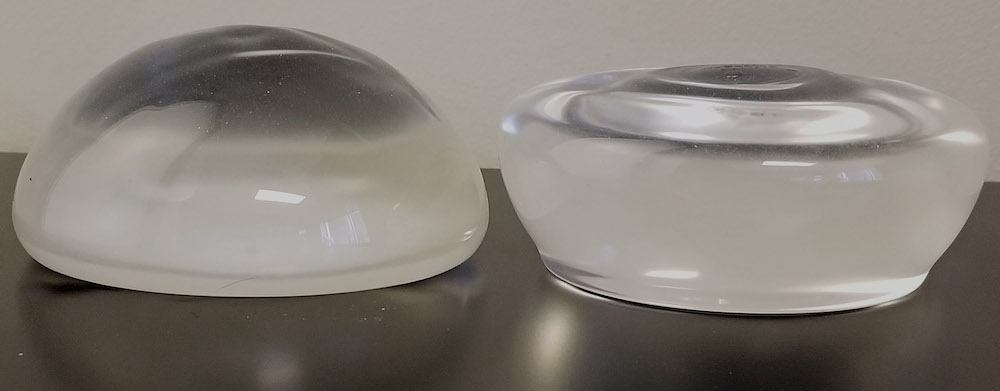
A. These two ultra-cohesive silicone implants are completely identical apart from the one on the right being flipped over 180 degrees. Notice the decrease in projection and very flat, broad upward facing side of the flipped implant in comparison to the other.
- B. Flipped implant in left breast
- C. After manually un-flipping implant
The initial treatment is usually manual manipulation and repositioning. However, particularly if this is a recurrent problem, surgical intervention may be necessary or desired to definitively prevent implant flipping from occurring in the future.
Nipple-Areolar Issues
The nipple-areolar complexes (nipples and the surrounding pigmented area) can be too large or small, too high or low on the breast or abnormally offset horizontally, asymmetrical in position or shape, irregular in configuration, inverted or over-projecting. The etiology can be congenital, post-surgical or traumatic in nature.
Undesirable Scarring
Surgical incisions do not always heal in a desirable fashion, leading to scars that can be too wide, hyperpigmented (dark) or painful such as with hypertrophic scars and keloids. Scar revision or other techniques may need to be used in order to improve the ultimate appearance.
Infection
Fortunately, infections following cosmetic breast surgery and breast reductions are relatively infrequent. When they do occur, a course of antibiotics is often effective. If a significant infection occurs in the presence of breast implants, they may need to be removed either temporarily or permanently.
Infections are more common in breast reconstruction, particularly in women who have had radiation therapy. These can be far more difficult to successfully treat without removing the implants.
Implant Exposure
This is a relatively rare problem in which the breast implant actually erodes through the skin over time and becomes “exposed.” The most common situations leading to this occurrence are protracted breast infections, massively large breast implants (especially saline ones) placed above the muscle in women with poor elasticity and very thin skin, and in a certain percentage of women who have had their breasts previously irradiated for breast cancer.
What Can I Expect in the Breast Revision Procedure?
The details of the breast revision procedure will vary significantly between patients based on the concerns being treated and the nature of the initial breast procedure that was performed. During your consultation, Dr. Turkeltaub will seek to gain a thorough understanding of your concerns, goals and aesthetic interests. This allows him to tailor a completely customized surgical plan that can optimally address any issues and help give you the breasts that you desire.
One of the most common forms of breast revision surgery is implant exchange or removal. For those interested in changing their implant aesthetics, Dr. Turkeltaub can help you select new implants that give you the shape, size and feel you desire. For those wishing to remove their implants entirely, he can discuss a variety of techniques—including breast lift and/or reduction—that may be able to give you a firmer, perkier and more youthful breast aesthetic after explantation.
How Long is the Recovery from Breast Revision Surgery?
The recovery process after a breast revision will depend on several factors, including the techniques utilized, whether any additional procedures were performed and the patient’s own anatomy. In order to help expedite your recovery and safeguard your results, it is important to carefully follow Dr. Turkeltaub’s post-operative instructions, wear any surgical garments as directed, adhere to nutritional and dietary guidelines, get plenty of rest and attend all of your post-op appointments.
How Much Does Breast Revision Surgery Cost?
The cost of breast revision will vary significantly based on the unique circumstances of each patient. Factors that can influence cost include:
- The complexity of the procedure
- The technique(s) utilized
- The cost of replacement breast implants, if necessary
- The cost of any additional procedures, such as a breast lift after explantation
A personalized price quote can be given once you have had a consultation with Dr. Turkeltaub. If you are interested in financing your procedure, a member of our team will be happy to assist you further.
Breast Revision Surgery Patient Testimonials
Additional Information About Breast Revision Surgery
Read more about breast revision surgery and the various issues that can be resolved with this treatment by visiting Dr. Turkeltaub’s blog.
Schedule Your Consultation
If you are considering breast revision and would like more details about surgery in relation to your unique breast-related issues and aesthetic desires, please contact our office to schedule your consultation.

